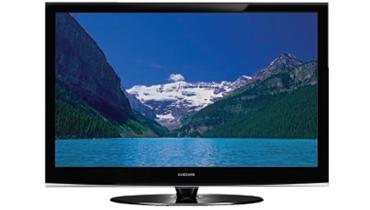Gadget Gary: Calibrating Your HDTV


I've often heard people who claim to be experts in the A/V business sing the praises of calibrating your TV. Me, I've always been skeptical. Why would I need to adjust something I just paid a ton of money for that's brand new? Isn't that like asking me to take in my factory delivered Porsche for a tune-up before I even put a mile on it? Why would I need that?
Here's how it was explained to me. (Some of you already know this.) Your TV comes from the factory in "Torch Mode," where contrast is pushed to the max and the color oversaturated. That's said to be done for maximizing impact on the sales floor since people are drawn to bright, colorful, crisp pictures. This is known as a "hot" TV. While it may draw you in like a blinking neon sign in Times Square, it doesn't show you the nuances that, say, film directors and directors of photography have gone to great lengths to capture.
So I decided to take the plunge and see if it really worked. I went with TweakTV ($300- $400; tweaktv.com) and used my Samsung Series 4 50-inch plasma as the guinea pig. The process was quite interesting. My TweakTV rep put a device resembling a video camera on a tripod and pointed it at my TV. Then he went to the menu and made a ton of adjustments. The whole process took about 40 minutes. I asked him to explain what he was doing as he went through each step. The most important things I got out of this were that he was calibrating the set's grayscale - an adjustment that makes colors look right across scenes with varying brightness levels. It can also make blacks look truly black and whites looks white without any unnatural tinting. And he also tweaked the TV's sharpness control, an adjustment that helps bring out real detail in pictures. He did this for each of my video inputs (cable, Blu-ray, DirecTV).
Did it make a difference? The answer is a resounding yes. To check it, we looked at The Dark Knight on Blu-ray Disc. First, we watched a scene without the calibration, the one where Bruce Wayne (Christian Bale) and Lucius Fox (Morgan Freeman) are in the bright white conference room. It looked pretty good to me. Then we watched the scene again with calibration. I was stunned. In the non-calibrated test, Freeman's face was washed out and showed little detail. In the calibrated scene, I could see his 5 o'clock shadow. We A-B'ed several Dark Knight scenes, and each time I saw things that I hadn't been able to before, like detail on the clothing of the background extras and the lines and crags in people's faces. In general, colors were more accurate and natural, and the shadow detail during the dark Lower Wacker Drive chase scene was simply awesome.
I am skeptical no more. Thanks to TweakTV, I saw what calibration can do, so I also had the rep do two of my other TVs. Since they're not going to come that way right out of the box, then I say that calibration is worth it.
Read more about Gary and his gadgets at soundandvisionmag.com/gadgetgary
- Log in or register to post comments



































































